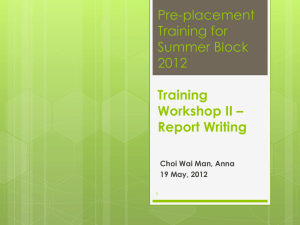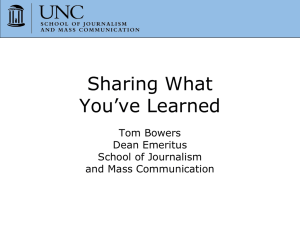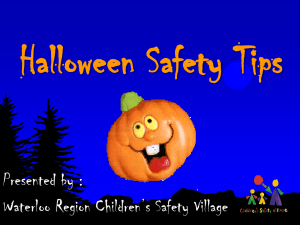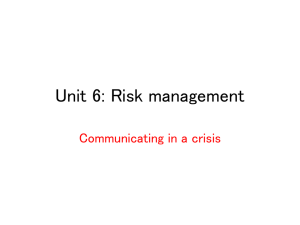for Days 3-5 - Differentiated Instruction in D11
advertisement
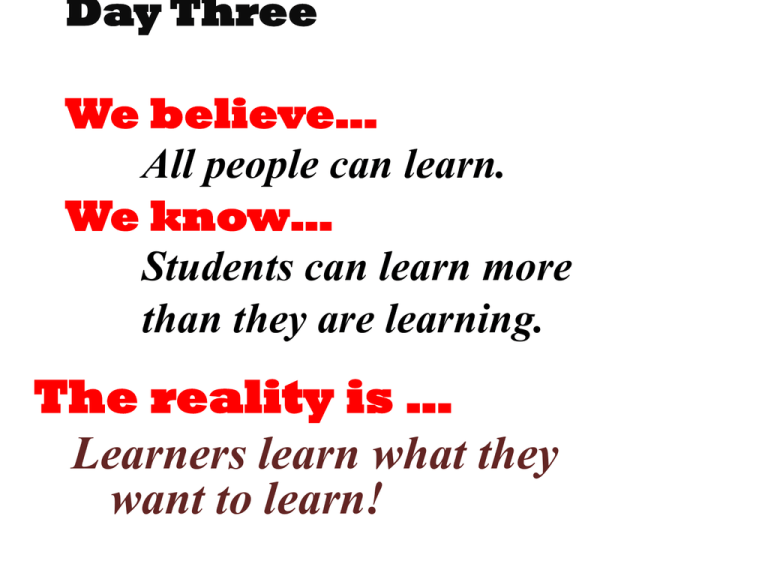
Day Three We believe… All people can learn. We know… Students can learn more than they are learning. The reality is … Learners learn what they want to learn! Day One and Two Highlights Share “AHAs”! How have you used the information? Leveled Activities Addresses growth in each learner’s knowledge base Based on pre-assessment data p. 36 Notebook p. 30 Level III High Degree of Mastery • Knows the information to be introduced Ready to go deeper in the content and learn new information about the topic Level II Approaching Mastery • Has proper background to learn the new information. Ready for the grade level standards Level I Readiness or Beginning • Has too many gaps to learn the new information – Not ready for the grade level information 3 Adjusting an Assignment GROUP A The teacher works with a majority of the class. GROUP B A small group works with the basics to fill in gaps. GROUP C A student works with a contract assignment. 4 Another Adjustable Assignment View Group A Group B • Each assignment fits the group’s needs identified from assessment data. • Teacher circulating gathering more data. Another classroom view of Adjustable Assignment Teacher circulating Gather data. Red Group Working on an assignment that is challenging. Yellow Group Working on a grade level assignment Green Group Working on a gap or a hole. Meeting Individual Needs Adjusting Assignments A. The teacher conferences with a student. Then circulates among all the learners. GROUP B Most of the class works independently on assignments written on the board. GROUP C Two students work with their own agenda folders. 7 Adjustable Assignment Grid 4 What do they need next ? 3 LEVEL III Grade Level Standard you are teaching 1 2 Background Knowledge LEVEL II 6. Gap or Hole 5 What do they know? LEVEL I 8 Allows students: • to work at appropriate pace • to order work to their liking • to develop independence • to manage personal time p153-156 • to work at their level of readiness Nested Model Fill in the boxes or circles of the Nested Organizer with the information learned in the Mac-A Lena Activity using the following categories. A. Activity in the center C. B D B. Standards A. C. Multiple Intelligences D. Thinking Skills Threaded Model Standard or Skill ___________ Write an activity in each oval. Subject Subject Subject Subject District Threaded Model Kindergarten Grade One Grade Two Grade Four Grade Five Grade Six Grade Eight Grade Nine Grade Ten Grade Twelve Grade Three Grade Seven Grade Eleven The Quality Learning Climate Create a safe learning environment. Motivate and challenge students. Display students’ work. Build RESPECT! p.3 Learning Environment Jigsaw 1. Form a group of four. 2. Count off from1-8 for assignments. 3. Each team member reads and summarizes the two assigned topics. 4. Everyone prepares a grid sheet for taking notes. 5. Each participant reports their findings to the group. Learning Environment Jigsaw 1. Make Rules Work. p. 10-12 5. Build Rapport. p.16-18 2. Make Body Language Speak. p. 12-13 6. WOW Your Students. p. 18-19 3. Make Words Work p. 14-15 4. Establish Open Communication. p. 15-16 7.Foster Selfefficacy p. 19-21 8. Motivate the Unmotivated. p.21-22 Other Factors to Establish a Quality Climate Notebook Page 24 • • • • • • Use Humor. Honor Contributions. Listen with Intent. Celebrate Success! Use Novelty. Provide Choices. p. 14 p. 16 p. 16 p. 18 P. 18 p. 20 Attitude is Altitude! Show “Withitness!” Love to teach and show passion! “The way we do things around here.” p. 17 State of Flow Csikszentmihalyi When the Mind is Challenged Not Bored Not Frustrated p. 128-130 p. 134-135 Sponge Activities Use Time Wisely! 21 Mystery Word or Concepts Assign one week before the introduction! Mystery Word ______ Project Assignments 1. Anchor Activities 6. Agendas 2. Cubes 7. Academic Contracts 3. Choice Boards 8. Learning Community Studies 4. Graphic Organizers 9. Content Activities 5 Center/Stations/ Learning Zones 10. TIME Introducing the Project 1. 2. 3. 4. Sign up for the topic of your choice. Meet your group! Assign roles of captain, timer and recorder. Read the information related to your topic in the book and take notes independently. 5. Identify the most effective ways to use this strategy in your classroom. 6. Go on a scavenger hunt to other class members and gather their ideas for the problems for using your strategy.Report findings. Creating the Display 1. Decide on the design of the display. 2. Include • What is it? • What is its purpose? • What are the most important uses? • What are needed management tips ? 3. Assign tasks to each group member. 4. Create the display. Preparation for Presentations 1. Decide what pieces do you need to present? 2. How are you going to present the information? 3. Who is presenting which parts? 4. Create a creative hook for an entrance and exit. 5. Practice. Project Presentation Managing Flexible Groups Tips to Manage Total Groups… T Draw a Star Fish. Place a tip in each point! Working Independently A Working ALONE Management Tips Draw a Stick Figure. Place of five Tips around him. Working with a Partner PARTNER Management Tips P Draw a flower with five Petals. Put a TIP on each petal. Working With in SMALL GROUP Small Group Management Tips S Draw five Steps. Put a Tip on each step! Differentiate More Students Learn! DAY FOUR The Journey Continues… Further Developing your First Presentation Identify your audience. What will the audience be doing at each part? Prepare a catchy opening and closing. Who will present which parts? What materials do you need? What equipment? Place to meet? Do you need to set up an outsider coming in to present with you? Debriefing Day Three • Stand up Name Tents. • Highlights from Yesterday AM /PM Sheet • Share some plans for Professional Development. • Make Day Four AM/ PM Sheet. • Explain Portfolio Folder. Flexible Grouping p. 100 T Total Group A Alone P Partner S Small Group Flexible Grouping Designs 1. Knowledge-Based Groups 2. Interest Groups 3. Ability Groups 4. Multiage Groups 5. Random Groups 6. Peer Tutoring Cooperative Learning Groups p. 113 Reminders and Tips Triarchic Teaming Model p. 57 _____ Analytical _____ Creative _____ Practical Note: Add to model Grid. The Unconscious Educator 1. Noises 2. Actions 3. Facial Expressions Become Conscious of your Actions!!! Academic Contracts p.157-162 Giving a Student a Choice with Teacher Approval! Vocabulary Cube Choice Board 1. Make a word puzzle using the word. 2. Contrast the word with something else. 3. Create a design to display the word. 4. Write a song or poem with the word. 5. Write a story using the word at least three times 6. Write an ad for the word. Sample Choice Board Make a collage. Create a song. Create a Wild list of Card cartoon. Compare ___ with ____. Construct a model. Develop a role-play. Make a attributes. Interview people. 1.Name Purpose. 2. Brainstorm Possibilities 3.Choose Keepers. Discard Losers. KEEPERS Valuable Use of Time Teaches a Standard Student Centered Assessment Fits Materials Accessible p. 140 4. Count Keepers. 5. Decide on Grid. 6. Make a Sample. Purposes of Choice Boards • • • • • • • • • • Homework After Reading or Problem Solving Learn a Vocabulary Word Inside a Station or Lab Projects for a certain topic or book Oral Report Presentation or Demonstration Independent Work Technology Sample Demonstrate a Skill 1.Name Purpose. 2. Brainstorm Possibilities 3.Choose Keepers. Discard Losers. p. 141 4. Count Keepers. Valuable Use of Time 5. Decide on the design. Teaches a Standard P.142 Student Centered 6. Make a Sample. Assessment Fits Materials Accessible KEEPERS From Quantity to Quality • TIME Amount of time Worth the time • MATERIALS and RESOURCES • STUDENT FOCUSED • ASSESSMENT • TEACHES NEEDED STANDARDS Sample Choice Board Ideas Wheel Pyramid Scroll CHOICES 1. 2. 3. 4. 5. Star Centers/Stations Learning Zones p. 148-152 • Structured – Rules established – Materials Available – Instructions given for assignment • Exploratory – Rules established – Materials Available More on Assessment • Pre-Assessment Tips p. 173 • Assessment Tools p. 181 • Prompts to use during selfassessment p. 184-187 • Informal Assessment tools chart p.190 Effective Questioning p. 205 Skinny FAT Questions Questions 53 Survey Exploration p. 217-218 1.Personal preference Survey 2.Study Habits Survey 3.Unit Knowledge-Base Survey Make up sample questions for each! 54 Day Five Managing Differentiated Instruction Let’s make a difference. How do you reach the individual needs of learners? Your Questions • Appropriate level: Examples • Three extensions for advanced students • • • • • Work with higher level thinking Make a connection into their world. Think of a way you use this information Research deeper Try this challenge: More complicated example. Requests • • • • • More time to talk to the team. What is the pre-test post test grid. Discuss Blooms and higher level activities The six point list for choice boards. Why not use a video More questions • Why would you thread horizontally into other subjects? Our examples threaded it horizontally . • Example of the Nested • How to balance DI when we are made to teach reading 90 minutes Differentiation Implementation Quiz 1. Read each item on the quiz. 2. Answer with Y YES, I do this! N Need, I need to improve! 3. Place the ones that you answered “NO” on the inside of your name tent. 60 Personal Daily Log Reflections Day 5 AM Day 5 PM 61 The Unconscious Educator 1. Noises 2. Actions 3. Facial Expressions Become Conscious of your Actions!!! 62 Analyze Your Lesson Plans Label the Intelligence Targets V/L Verbal/ Linguistic M/R Musical/Rhythmic L/M Logical/Mathematical V/S Visual/Spatial B/K Bodily/Kinesthetic TALLY Label T.A.P.S. T Total group A Alone P Partners S Small Groups Find a Partne r and SHARE! Check the checklist! p. 241-242 p. 3 Project Model to Explore! Project Model 1. Management Tips 2. Things to remember! 3. Additions to the Plan 4. A Choice Board Activity p. 49 Notebook p.37 Five Star Management Tips for the Project-Based Model 1. Use the grade level standards and content to create the project topic list. 2. Provide a project packet when you assign the project. 3. Place emphasis on the process instead of the product. 4. Make sure the project is age appropriate and is student-focused. 5. Establish a Project Partner to share parts due on the Timeline Assignments. Active Processing through Project Product Planning Produced Age-Appropriateness Will the students be able to process the information? Is it student –focused? Content How will the project will be used to extend the learning in a particular content area? Project Choice Board 1. Create a timeline for a project. 3. Create a choice board of project choices for a certain topic. 2. Create an assessment tool for the presentation. 4. Create a project contract. More Differentiated Models Activity Analysis p. 60-63 • What, who, when, where, how p. 61 • Five Tips p.62 • Examples p. 63 Student-Directed Model Teacher-Directed Model p.64 p. 67 Another Planning Models Activity Analysis Model What? Who? When? Where? How? More Models to View Planning a Lesson: A View 1. Pre-assess the information being taught. 2. Gather and interpret the assessment data. 3. Purpose of the lesson and the hook. 4. “Lecturette” 5. Guided practice. 6. Assess during revamp and adjust according to need. 7. Student focused activities 8. Reflections and Evaluations Lesson Parts 1. 2. 3. 4. Teacher Directed: Pre-assess Teacher Directed: Lecturette Teacher Directed: Guided Practice Student Directed: Independent Practice a. Groups and their tasks based on pre-assessment. b. Grouping by knowledge base and experience. 5. Evaluate Developing your Third Presentation Identify your audience. Develop the plan. What will the audience be doing at each part? Prepare a catchy opening and closing. Who will present which parts? What materials do you need? What equipment? Place to meet? Do you need to set up an outsider coming in to present with you? Trainer Tips p. 66 – 70 Notebook 80 Find your Phase of DI Implementation. 81 Portfolio Conference Preparation 1. Take 15 minutes to explore portfolio entries, notes, text and journals to select important personal learning components of the course. 2. Tab them with sticky notes. 3. Meet with your energizing partner for the conference. 82 Complete Response Conference Sheet A. AM/PM Sheets __ __1 __ ___2 __ ___3 __ __4 __ __ 5 B. p. 3 in book Biggest Need that I have now moved to Yes. Shared ____ _______ C. Climate Grid ___ ____ D. Model Grid ___ ___ Shared ____________ E. Sample Adjustable assignment F. Assignment ___ Chart ___ G. Choice Board ___ ___ Cube ___ ___ Table Theme Songs for this Training. You are GREAT and Getting GREATER! 85 86 Managing Journals Pages 219-223 1. 2. 3. 4. 5. 6. AHA Boxes Signs and Stars Draw it! Use a Likert Scale Color it! Why? Theme Song Why? 87 Models of Differentiated Instruction 1. Adjustable Assignment Model (Tiered Assignment) 2. 3. 4. 5. Curriculum Compacting Model Academic Contract Model Problem-Based Model Project-Based Model


